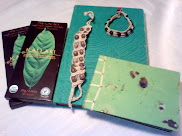Why are the Indigenous Mayans of Quintana Roo being Beaten and Detained?
Through this medium we want to inform of the arbitrary detentions that have been suffered by the ejidatarios (communal landowners - editor's note) of the Mayan communities of the municipality of Felipe Carrillo Puerto. Given the events that took place on the highway from Felipe Carrillo Puerto to Cancun the past night of November 24 where various groups of ejidatarios took the aforementioned highway in protest of the insufficient pay of 50% offered by the SEDARI (The state Secretariat of Agricultural and Indigenous Development - ed.) due to failure of farmer's crops from [this year's] lack of monsoon rains.
Following these events state and federal police officers have taken illegal actions beating, abusing and encarcelating the ejidatarios; it is worth mentioning that these acts were realized in the interior of the city, in the streets, and even in the central park on the 24th and towards people who because of their simple appearance were considered to be ejidatarios, detaining in this matter 228 campesino farmers.
We mention also that these actions of the peasantry are a product of the evident inequality and the contrasts that exist in the state of Quintana Roo[, Mexico] which receives a great deal of investment in the north, in the turist zones and we see that there are no development projects for the mayan communities that live in the same conditions as they did five hundred years ago while these communities are owners of the natural resources of the state.
For these reasons we demand the liberation of the 228 citizens who are imprisoned.
For the prompt and immediate liberty of the 228 imprisoned indigenous mayans of Felipe Carrillo Puerto!
Ejido commissioners and Municipal delegates of Felipe Carrillo Puerto, Quintana Roo
Felipe Carrillo Puerto, on the 25 of November of 2009
* Original Document can be downloaded here.
**Click here for a good history on ejidos and ejidatarios.




